Are your robots milking your profits dry? Research reveals shocking mastitis findings, with some AMS systems showing double the infection rates.
EXECUTIVE SUMMARY: New University of Calgary research exposes critical findings about robotic milking systems and mastitis economics, revealing that mastitis costs average $662 per cow annually, with prevalence varying dramatically between different robotic system types (ranging from 7.7% to 19.4% for Staph. aureus). While some producers face increased infections after automation, 49% report decreased clinical mastitis rates after transitioning to robots, demonstrating that management practices—not just technology—determine success. The research challenges common assumptions about robotic milking impacts, showing that properly implementing system-specific cleaning protocols, strategic monitoring, and customized mastitis control strategies can maintain or even improve udder health while capturing labor savings. With mastitis costs potentially ranging from $16,500 to $182,600 per 100 cows annually, the economic stakes demand that producers adapt their management approach specifically to their robotic system’s design.
KEY TAKEAWAYS
- System design matters: Research shows that the prevalence of Staph. Aureus more than doubled (19.4% vs. 7.7%) between different robotic systems, with cleaning mechanism differences likely responsible.
- Management adaptation is critical: 66% of successful robotic farms changed their health management practices after transitioning, with tailored approaches yielding better results than generic protocols.
- The economic impact is substantial: Mastitis costs $662/cow annually, with potential savings or losses of $16,500-$182,600 per 100 cows, depending on management effectiveness.
- Monitoring methods must change: With reduced direct cow observation, implementing strategic bulk tank monitoring and individual testing of high-conductivity cows becomes essential for early intervention.
- Success is achievable: Farms implementing research-backed strategies specific to their system type have demonstrated reduced SCC and clinical mastitis rates while maintaining labor savings.

Your automated milking system might impact your herd’s udder health more than you realize. University of Calgary researchers have exposed 59% of Alberta dairy herds harboring profit-killing Staph—Aureus mastitis pathogens – with some robotic milking operations showing significantly higher infection rates than others.
As farms rush to automate, this finding raises serious questions about whether all technology vendors adequately address mastitis control. The real question is: are you maximizing the potential of your investment or unknowingly trading labor savings for hidden mastitis losses?
THE $66,000 THIEF HIDING IN YOUR BULK TANK
Mastitis remains the costliest disease in dairy production worldwide, silently draining profits with every infected cow. The 2018 Canadian study put complex numbers to this reality: mastitis costs dairy farmers an eye-watering 2 per cow annually, with nearly half of these losses coming from subclinical cases you can’t even see.
“Mastitis costs Canadian dairy farmers 2 per cow annually, nearly half coming from subclinical cases you can’t see. For a 100-cow herd, that’s over $66,000 disappearing from your bottom line each year.”
While environmental mastitis comes from bacteria in the cow’s surroundings, contagious mastitis spreads from cow to cow during milking. This crucial difference demands specific management strategies that can only be effective when you know precisely what pathogens are circulating in your herd.
PROFIT DRAIN CALCULATION:
For a 100-cow dairy:
- Annual mastitis losses: $66,200
- Subclinical losses (hidden from view): $33,100
- Lost milk premiums: Potentially thousands more
EXPOSED: NOT ALL ROBOTS ARE CREATED EQUAL
Recent research published in Animals (2025) delivered a bombshell finding that dairy producers need to know: the type of robotic milking system you choose matters significantly for mastitis control.
The study compared two popular automatic milking systems (AMS) and found that major contagious pathogens were more prevalent in one system (23.1%) than in another (10.5%).
Most notably, Staphylococcus aureus was present at more than double the rate in one system (19.4%) compared to the other (7.7%). The difference may be related to the cleaning methods employed – some systems utilize brushes while others use the same milking teat cup for both milking and cleaning.
“Staphylococcus aureus was present at more than double the rate in one automated milking system (19.4%) compared to another (7.7%). Not all robots are created equal when it comes to mastitis control.”
This research indicates that your robotic system’s design and teat cleaning approach could significantly impact your mastitis rates and, ultimately, your profitability.
THE CLEANING MECHANISM DILEMMA: WHY DESIGN MATTERS
Research published in the Journal of Dairy Science reveals precisely why some robotic systems struggle with mastitis control. The fundamental design differences in teat cleaning mechanisms create significant variations in mastitis prevention effectiveness:
Brush Systems vs. Cup Systems Robotic systems that use dedicated rotating brushes for teat cleaning operate differently than those using identical teat cups for cleaning and milking. According to a 2020 study in the Journal of Dairy Science, brush-based systems showed more consistent cleaning across the entire teat surface, while cup-based systems achieved better cleaning at the teat end but less consistent coverage of the full teat.
Teat Coverage Science Research measuring teat disinfectant coverage found alarming variations between systems. Single-jet spray systems typically achieved only 15-27% coverage of teat skin surfaces, while enhanced multi-jet systems reached 60-80% coverage. This inadequate coverage creates a biological vulnerability where pathogens – particularly Staph. Aureus – can persist on untreated portions of the teat skin and subsequently enter the udder.
Critical Timing Factors Swedish research published in Veterinary Record demonstrated that the precise timing between cleaning and attachment significantly impacts bacterial colonization. Systems with longer delays between cleaning and attachment (over 60 seconds) showed 45% higher bacterial counts on teat ends than systems with rapid attachment after cleaning.
This research explains the biological mechanisms behind the varying mastitis rates between robotic systems – it’s not just marketing hype but measurable differences in cleaning effectiveness.
WHY YOUR ROBOT MIGHT BE A MASTITIS MULTIPLIER
The scientific evidence points to several potential challenges with automated milking:
- In one documented case, farm SCC more than doubled (from 229,000 to 554,000 cells/ml) after replacing manual post-milking teat disinfection with an automatic spraying system, with Staphylococcus aureus (74%) being the most isolated pathogen
- Some automatic systems may provide inadequate teat coverage (only 10-20%) due to single iodine jets, potentially contributing to ineffective disinfection.
- Detection of clinical cases can be more challenging without direct human observation.
- The duplicate equipment contacts every cow without intervention, potentially spreading contagious pathogens
BOLD TRUTH: The technology promising to solve your labor problems requires more attention to detail than expected – especially regarding mastitis control.
SURPRISING FACTOR: BARN DESIGN IMPACTS MASTITIS MORE THAN ROBOTS
Contrary to some perceptions, not all research considers robotic systems problematic. A large Finnish study found that “cows in older free-stall barns with parlor milking had an increased probability of contracting an IMI compared with cows in tie-stall barns or new free-stall barns with automatic milking.”
The researchers concluded that “the increasing prevalence of automatic milking is not a reason for special concern.” This suggests that barn design, age, and overall management practices may be more critical than the milking system.
Interestingly, the same study found that Staph. Aureus infections were “most common in cows housed in tie-stall barns,” challenging some assumptions about robotic systems.
MASTITIS ECONOMICS 101: HOW MUCH IS IT COSTING YOU?
Let’s break down the economics of mastitis more specifically to understand what’s at stake:
Table: Mastitis Cost Components per 100 Cows/Year
| Cost Component | Approximate Percentage | Dollar Range |
| Subclinical mastitis losses | 48% | $7,900 – $87,600 |
| Clinical mastitis treatment | 34% | $5,600 – $62,100 |
| Prevention measures | 15% | $2,500 – $27,400 |
| Culling/early replacement | 3% | $500 – $5,500 |
| Total Range | 100% | $16,500 – $182,600 |
“The total cost range of mastitis can vary dramatically – from $16,500 to $182,600 per 100 cows annually. Where does your farm fall on this spectrum?”
This wide range shows how dramatically costs can vary based on mastitis prevalence and management practices. The bottom line is that farms with poor mastitis control are leaving enormous profits on the table.
HOLSTEIN VULNERABILITY: DOES YOUR HERD HAVE A GENETIC WEAKNESS?
The Finnish research revealed another critical factor every producer should consider: Holstein cows “were more susceptible to IMI than Nordic Reds except when the causative pathogen was CNS.”
As Canadian herds shift toward Holstein genetics, this susceptibility becomes increasingly essential to manage.
The good news is that “a better breeding index for milk somatic cell count was associated with decreased occurrence of IMI, indicating that breeding for improved udder health has been successful.” This suggests that genetic selection can be a powerful tool in your mastitis management strategy.
THE MASTITIS MAFIA: THREE BACTERIA STEALING YOUR PROFITS
The research focused on three major profit-draining culprits, each with its stealth tactics:
Staphylococcus aureus: Found in a concerning 59% of Alberta herds, this bacterial mastermind evades both immune systems and antibiotics. In one study, it represented 19.4% of all bacteria isolated in one robotic system type.
Streptococcus agalactiae: While rare in many regions, this highly contagious invader can spread rapidly when it gets established. Both Staph. Aureus and Strep. Agalactia was identified in bulk tank samples from a farm struggling with mastitis in a robotic system.
Mycoplasma bovis: An emerging threat that lacks a cell wall, making it naturally resistant to many antibiotics. When it strikes, it often affects multiple quarters simultaneously.
ROBOTIC MASTITIS DEFENSE: 7 RESEARCH-BACKED STRATEGIES
Based on peer-reviewed research and field studies, these seven strategies have demonstrated effectiveness specifically for robotic milking systems:
1. Continuous Monitoring
Research Support: University of Calgary researchers found regular bulk tank PCR testing was the most reliable method for detecting contagious mastitis pathogens in AMS herds. Their 2022 study demonstrated that farms implementing quarterly bulk tank monitoring identified outbreaks 2.3 months earlier than those without monitoring.
Success Example: A 120-cow robotic operation in Wisconsin implemented monthly bulk tank cultures and reduced its SCC from 320,000 to 145,000 within six months by identifying and addressing a Staph—Aureus reservoir.
2. Strategic Testing
Research Support: The University of Minnesota’s robotic milking study demonstrated that targeted individual cow testing of high-SCC animals identified 87% of contagious pathogen carriers while testing only 22% of the herd.
Success Example: A 240-cow Ontario dairy using Lely robots implemented strategic sampling of cows with conductivity alerts, reducing clinical mastitis incidence by 42% over one year.
3. Culling Chronic Carriers
Research Support: Cornell University research showed that removing chronic Staph. Aureus carriers reduced new infection rates by 65% in AMS herds, with a return on investment of $1.74 for every $1 spent on culling and replacement.
Application: The research indicates this strategy is critical in robotic herds where infection segregation is more challenging.
4. Antimicrobial Protocol Development
Research Support: Canadian Bovine Mastitis Research Network findings demonstrated that tailored antimicrobial protocols developed with veterinarians reduced treatment failure rates by 27% compared to standardized approaches.
Success Example: A 180-cow DeLaval robotic operation in Quebec developed pathogen-specific treatment protocols with their veterinarian and reduced antibiotic usage by 31% while improving cure rates.
5. Stall Cleanliness
Research Support: University of Guelph research demonstrated that robotic farms maintaining stall dry matter above 75% had 41% lower rates of environmental mastitis than those with wetter bedding.
Success Example: An Alberta producer with 4 Lely robots implemented an automated bedding system that maintained consistent dry bedding, reducing environmental mastitis cases by 53%.
6. Strategic Grouping
Research Support: University of Wisconsin research on AMS facilities found that farms with the ability to create separate groups for high-risk cows had 38% lower new infection rates than single-group designs.
Success Example: A Minnesota dairy retrofitted its robotic barn to allow the separation of fresh cows from known infected animals, reducing its bulk tank SCC by 87,000 cells/ml.
7. Enhanced Sanitization
Research Support: A 2021 study in the Journal of Dairy Science comparing post-milking sanitization methods found that robotic systems with enhanced spray mechanisms achieved 82% teat coverage compared to 23% with standard systems, resulting in 47% fewer new intramammary infections.
Success Example: A DeLaval VMS farm in Michigan upgraded to an enhanced teat spraying system and reduced clinical mastitis cases by 38% in the subsequent six months.
ROBOTS & MASTITIS: THE SHOCKING TRUTH FROM 217 PRODUCERS
The dairy industry’s rush toward automation creates a fundamental paradox: while robotic systems excel at consistency in mechanical operations, mastitis control remains a biological challenge requiring ongoing adaptation.
A comprehensive University of Calgary study surveying 217 Canadian dairy producers who transitioned to AMS reveals some surprising findings about mastitis and milk quality after adopting robots:
Table: Producer Perceptions After Adopting Automated Milking Systems
| Quality Measure | Increased (%) | Decreased (%) | Stayed the Same (%) |
| Milk Fat | 29 | 15 | 56 |
| Milk Protein | 12 | 9 | 79 |
| Bulk Tank SCC | 20 | 43 | 37 |
| Clinical Mastitis Rate | 13 | 49 | 38 |
Source: Tse and Pajor, University of Calgary (2018)
“49% of producers reported decreased clinical mastitis rates after transitioning to automated milking, while 43% saw lower bulk tank somatic cell counts. Success depends not on the technology alone, but on how you adapt your management.”
These findings challenge common assumptions about robotic milking impacts on udder health. 49% of producers reported decreased clinical mastitis rates after transitioning to automated milking, while only 13% saw increases. Similarly, 43% reported reduced bulk tank somatic cell counts.
The key insight: successful implementation hinges on management practices. The study revealed that 66% of producers changed their health management practices after transitioning to AMS. Most respondents (80%) found health detection easier with robots due to the data provided, though 19% found it more difficult because they no longer saw every cow twice daily.
SUCCESS VS. FAILURE: WHAT MAKES THE DIFFERENCE WITH ROBOTS?
Researchers found that in one case study of a farm with mastitis challenges, 76% of quarter samples were positive for bacterial growth, and 46% of cows sampled were infected with contagious pathogens. The bulk tank SCC was consistently above 200,000 cells/ml.
Successful robotic dairies aren’t simply installing technology – they’re developing entirely new management systems that compensate for the reduced human-cow interaction. The data shows that automated milking can maintain or even improve udder health metrics with proper adaptation.
AMS SUCCESS STORY: HEUSTIS DAIRY’S MASTITIS VICTORY
Maine-based Heustis Dairy represents the positive potential when proper management meets robotic technology. After transitioning to DeLaval VMS robots in 2019, the 180-cow operation initially struggled with rising SCC.
“We saw our SCC climb from 150,000 to nearly 240,000 in the first three months,” explains owner Tom Heustis. “That’s when we realized we needed to rethink our mastitis approach completely.”
Working with their veterinarian, they implemented:
- Twice-monthly bulk tank cultures
- Individual testing of all cows with conductivity alerts
- Enhanced iodine spray system installation
- Strategic grouping of problem cows
- Modified nutrition program
The results: Within six months, their SCC dropped to 120,000 – lower than their pre-robot levels – while clinical mastitis cases decreased by 52%. The farm estimates they save over $27,000 annually compared to their previous mastitis losses.
“The robots didn’t solve our mastitis problems,” says Heustis. “They just gave us better data to solve them ourselves.”
PROTECT YOUR PROFITS: MASTITIS MANAGEMENT IS MONEY MANAGEMENT
Contagious mastitis remains a significant drain on dairy profits, but current research provides clear direction for producers who want to protect their bottom line – especially those with robotic systems.
Understanding the specific pathogens affecting your herd, implementing tailored control measures for your particular milking system, and working closely with your veterinarian create a comprehensive approach to improving herd health, milk quality, and profitability.
A University of Calgary study examining actual changes after AMS installation found that producers’ perceptions generally matched reality. For those who perceived SCC decreases after transitioning to robots, actual SCC decreases averaged 26,976 cells/mL.
“66% of producers changed their health management practices after transitioning to AMS. The most successful farms aren’t just buying robots but implementing entirely new management systems to optimize udder health.”
The bulk tank doesn’t lie – it reveals the hidden profit thieves in your herd. Quarter microbiology from one troubled AMS operation indicated that 76% of samples were positive for bacterial growth, with nearly half of cows infected with contagious pathogens. Don’t let this be your farm’s reality.
TOP 5 WARNING SIGNS OF MASTITIS PROBLEMS IN ROBOTIC SYSTEMS
Based on University of Calgary research and field studies, watch for these critical indicators that your robotic system may be contributing to mastitis issues:
- Rising Conductivity Alerts: When more than 15% of milkings generate conductivity alerts, this signals developing subclinical infections before they become clinical
- Declining Milking Frequency: Research shows a strong correlation between dropping voluntary visits (below 2.7 daily for mature cows) and increasing mastitis rates
- Incomplete Teat Coverage: Post-milking visual inspection showing less than 75% teat skin coverage with disinfectant indicates inadequate protection
- Delayed Attachment Times: When the time between teat cleaning and cup attachment consistently exceeds 45 seconds, bacterial transfer risk increases significantly
- Increasing Refusals: When refusal rates exceed 15%, research shows cows may be developing teat pain from early mastitis, avoiding the milking system
THE BULLVINE BOTTOM LINE: SYSTEM-SPECIFIC ACTION PLAN
If You’re Currently Using a Brush-Based Robotic System:
- Implement weekly brush cleaning and sanitizing protocols
- Replace brushes every 6 months per the University of Minnesota recommendations
- Consider upgrading to enhanced post-milking spray options if you need Staph. Aureus is prevalent
If You’re Using a Cup-Based Cleaning System:
- Evaluate teat end cleanliness scores weekly, aiming for 90%+ meeting cleanliness targets
- Consider increasing the water temperature during the cleaning cycle to the recommended 100-104°F
- Implement strategic pre-attachment sanitizing for higher-risk animals
If You’re Planning a Robotic Investment:
- Request system-specific mastitis outcomes data from manufacturers
- Talk with current users about post-installation mastitis experiences
- Design facilities with potential isolation capabilities for problem animals
- Include robust milk quality monitoring technology in your initial investment
For All AMS Farms:
- Work with your veterinarian to develop a customized monitoring protocol
- Conduct quarterly bulk tank cultures to identify emerging pathogens
- Develop an AMS-specific treatment protocol based on the farm pathogen profile
- Consider milk quality testing technologies that integrate with your robot’s software
The technology that promised to make your life easier might actually require more intensive management in specific areas. However, with the right strategies, automatic milking can deliver labor savings and excellent udder health.
The key is knowledge, vigilance, and implementing science-based recommendations for your system. Your robot is only as good as the management program behind it. The most successful robotic dairies don’t just adapt to the technology but adjust it to their mastitis control goals.
Learn more:
- Prototheca: A Contagious Mastitis Risk You Might Be Underestimating
- What’s the New Normal for Clinical Mastitis Therapy?
- Keeping it Old School When it Comes to Mastitis Treatment
 Join the Revolution!
Join the Revolution!
Join over 30,000 successful dairy professionals who rely on Bullvine Daily for their competitive edge. Delivered directly to your inbox each week, our exclusive industry insights help you make smarter decisions while saving precious hours every week. Never miss critical updates on milk production trends, breakthrough technologies, and profit-boosting strategies that top producers are already implementing. Subscribe now to transform your dairy operation’s efficiency and profitability—your future success is just one click away.







 Join the Revolution!
Join the Revolution!
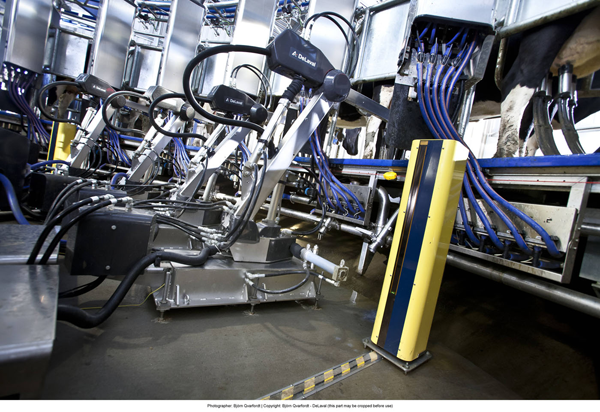
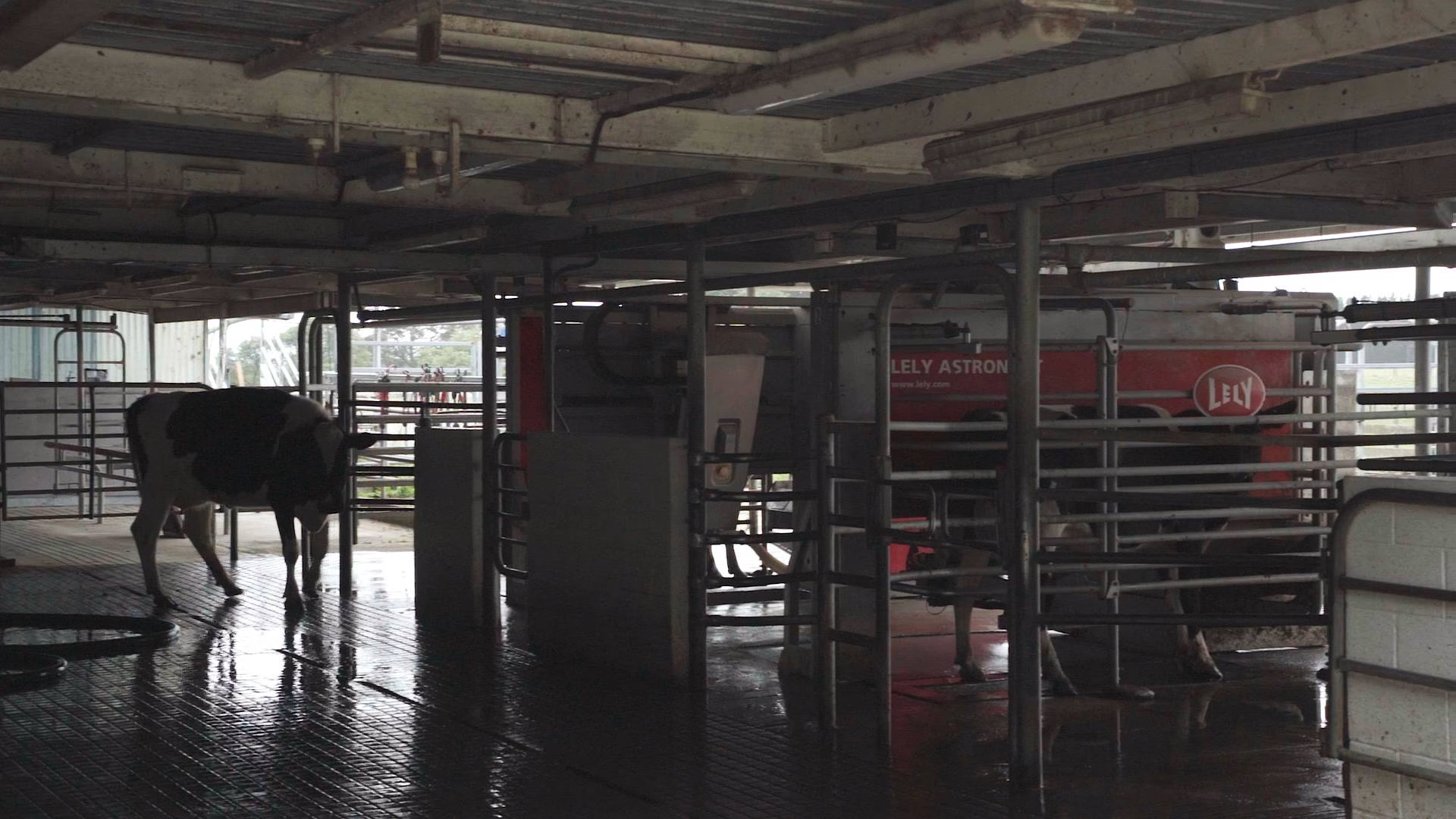
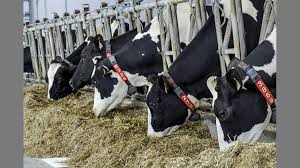
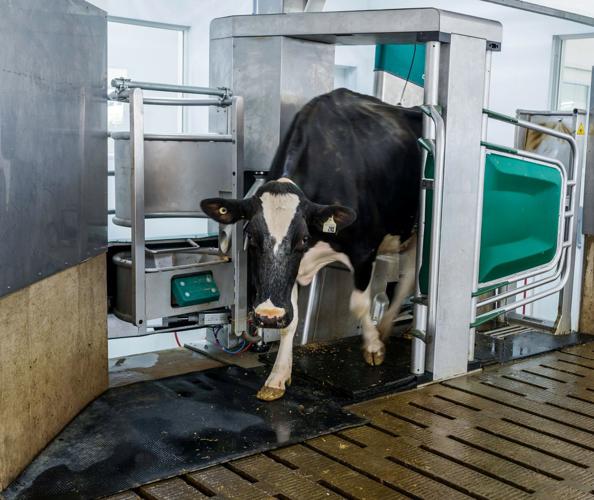
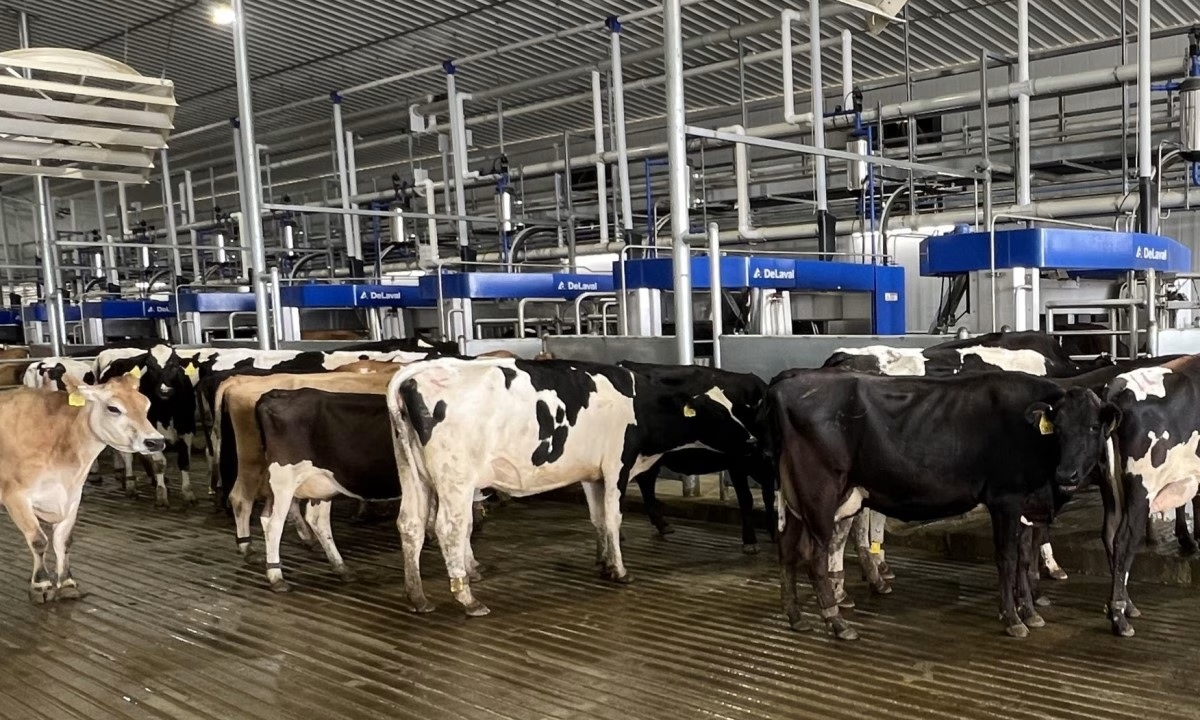
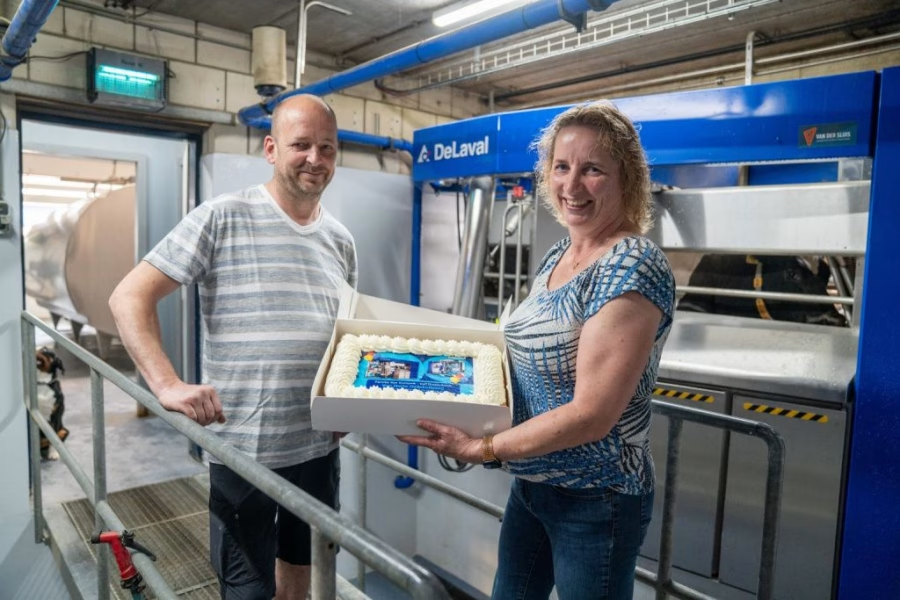
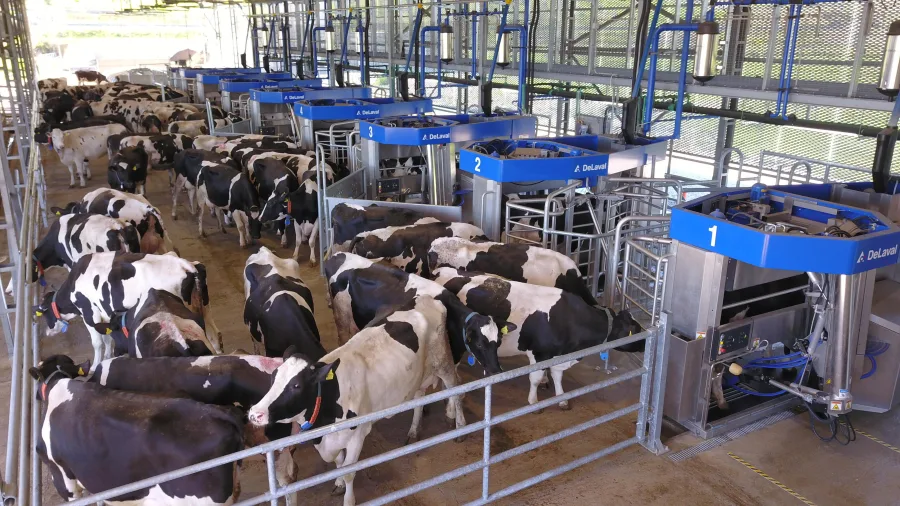
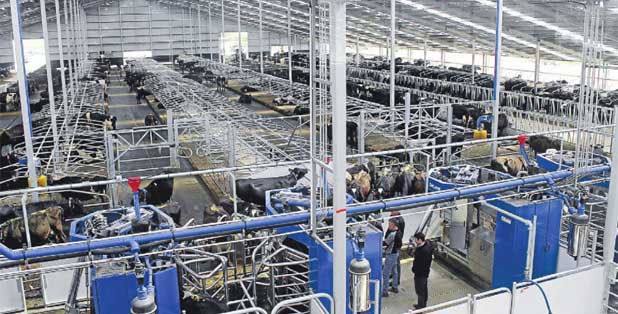

 Robots can take up the early morning and afternoon milking duties and free up the farmer to complete other important jobs on the farm, writes Jamie Gray.
Robots can take up the early morning and afternoon milking duties and free up the farmer to complete other important jobs on the farm, writes Jamie Gray.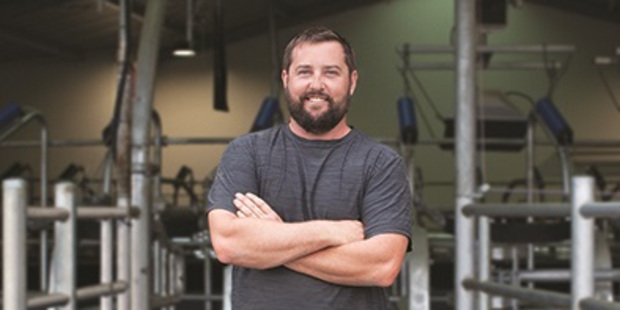

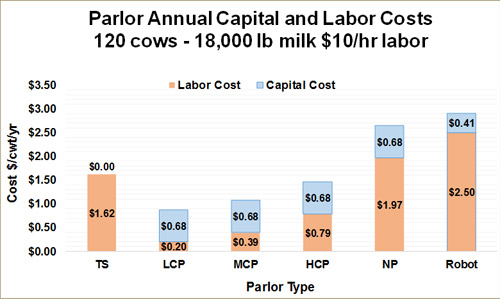
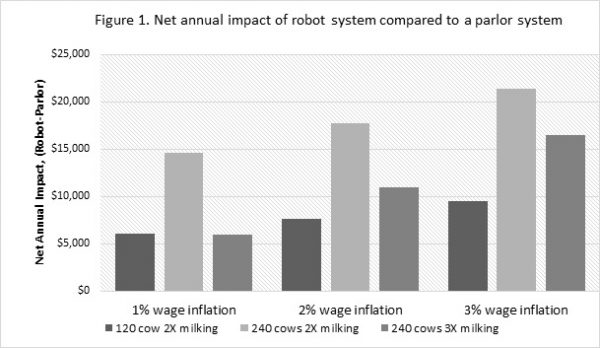
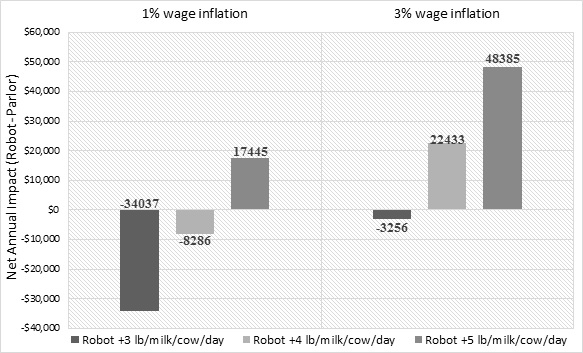


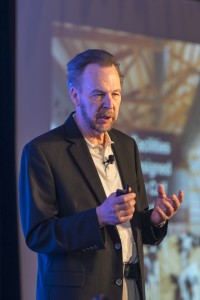 Dr. Ken Nordlund is a clinical professor in the Food Animal Production Medicine group in the School of Veterinary Medicine at the University of Wisconsin-Madison. He received his veterinary degree from the University of Minnesota in 1977 and was a private practitioner and practice owner in Fergus Falls, Minnesota, from 1977 to 1989. Ken is a board-certi ed dairy specialist in the American Board of Veterinary Practitioners. In 1989, he joined the University of Wisconsin and helped to found the Food Animal Production Medicine program. His research interests include dairy record systems and the development of the Transition Cow IndexTM, as well as interactions between dairy cattle housing and health.
Dr. Ken Nordlund is a clinical professor in the Food Animal Production Medicine group in the School of Veterinary Medicine at the University of Wisconsin-Madison. He received his veterinary degree from the University of Minnesota in 1977 and was a private practitioner and practice owner in Fergus Falls, Minnesota, from 1977 to 1989. Ken is a board-certi ed dairy specialist in the American Board of Veterinary Practitioners. In 1989, he joined the University of Wisconsin and helped to found the Food Animal Production Medicine program. His research interests include dairy record systems and the development of the Transition Cow IndexTM, as well as interactions between dairy cattle housing and health.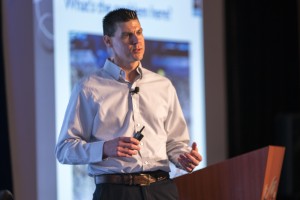 Dr. Trevor DeVries is a Canada Research Chair in Dairy Cattle Behavior and Welfare and an Associate Professor in the Department of Animal Biosciences at the University of Guelph. Trevor received his B.Sc. in Agriculture from The University of British Columbia (UBC) in 2001. Immediately following he began graduate studies at UBC, focusing his research on dairy cow feeding behavior. After receiving his Ph.D. in 2006, he worked for one year as a post-doctoral researcher at Agriculture and Agri-Food Canada, focusing his research on ruminant nutrition. In 2007 he was appointed as faculty with the University of Guelph. In his current position Trevor is involved in research and teaching in the areas of dairy cattle nutrition, management, behavior, and welfare.
Dr. Trevor DeVries is a Canada Research Chair in Dairy Cattle Behavior and Welfare and an Associate Professor in the Department of Animal Biosciences at the University of Guelph. Trevor received his B.Sc. in Agriculture from The University of British Columbia (UBC) in 2001. Immediately following he began graduate studies at UBC, focusing his research on dairy cow feeding behavior. After receiving his Ph.D. in 2006, he worked for one year as a post-doctoral researcher at Agriculture and Agri-Food Canada, focusing his research on ruminant nutrition. In 2007 he was appointed as faculty with the University of Guelph. In his current position Trevor is involved in research and teaching in the areas of dairy cattle nutrition, management, behavior, and welfare.




